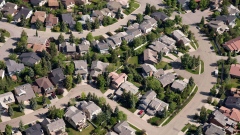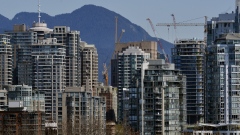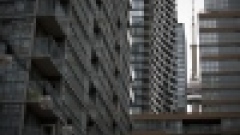(Bloomberg Opinion) -- America’s urban landscape is on the cusp of change. As big cities struggle, suburbs and smaller cities have a chance to win over fleeing workers, boosting their tax bases. But in order to be attractive places to live, they’ll have to look a bit more city-like.
Many big U.S. cities were already struggling before the pandemic struck. Powerful local homeowners known as NIMBYs blocked new development and transit, making urban cores less affordable and less convenient, and slowing the urban influx that began around 1990. Now Covid-19 is hitting big cities the hardest:
Meanwhile, the pandemic may convince companies that remote work is an acceptable and productive way to manage large portions of their workforces. Crime is also increasing in large cities, while the rise of dating apps and other social technologies is making suburban life more fun. All this means the centers of New York City, San Francisco, and other so-called superstar cities may lose population in the decade to come.
Where will the people go? Declining cities in the Rust Belt will offer cheap rents, but often at the cost of urban blight. Most city dwellers don’t enjoy life in rural areas or small towns. So they’ll probably move to the same sorts of places they moved last time people fled city centers en masse: to the suburbs.
But “the suburbs” won’t mean exactly what it meant in the 1970s. Then, the term conjured visions of malls, single-family houses separated by broad lawns, and homogeneous White populations. In order to attract today’s urbanites, suburbs will have to offer something a bit different.
Most importantly, they’ll have to become denser. Without new housing construction, attractive suburbs will suffer the same fate as superstar cities — rising rents and displacement. Newcomers will be accused of gentrification and pitted against long-term residents in a bitter zero-sum game.
In earlier eras, it was possible for suburbs to grow through sprawl, but this process has now probably reached its limit in most locations. Building further out would make it too unpleasant to drive to workplaces, retail, entertainment, or other destinations.
The way forward, then, is for suburbs to build more dense housing. Fortunately, this is a lot easier to do in capacious, sprawling suburbs than in the middle of Manhattan. It would be easy to change single-family zoning rules to allow pockets of denser housing throughout suburbs. These wouldn’t be towering skyscrapers, but duplexes, triplexes, fourplexes, row-houses, in-law units, and small apartment complexes.
Most suburbs can accommodate a large increase in density without feeling like a city. Oregon is showing how this can be done, legalizing small multi-family housing units throughout the entire state. Portland is going further, allowing various forms of dense infill housing and eliminating mandatory on-site parking requirements in order to free up more space for homes.
Such measures will keep suburbs not only cheap but also diverse as they become more populous. The trend toward more multiracial suburbs actually began decades ago. The lily-white ‘burbs of the 70s are becoming rarer due to immigration and to Americans of all races choosing more integrated neighborhoods. Denser and more-affordable housing will let suburbs maintain this trend while also enjoying another burst of growth.
Suburbs will also have to become more fun and vibrant. Dating apps and social networks make it easier for people to meet, but they still need somewhere to go besides their own houses. Downtown areas with restaurants, bars, dance clubs, parks, and shop-lined streets all provide more attractive destinations than the old suburban attractions of malls and strip-malls.
In their book “Our Towns: A 100,000-Mile Journey into the Heart of America,” writers James and Deborah Fallows note one of the key hallmarks of successful, thriving places is a vibrant downtown. In fact, suburbs should probably offer more than one such area — maybe one filled with bars and nightlife, a couple of quieter shopping villages for older residents, and so on.
Finally, suburbs should offer some transit options. Cars will probably continue to be the main mode of transportation, especially as electric or even self-driving vehicles become more common. But a good bus and light rail network will help keep the roads from getting clogged, while a commuter rail stop will let suburban residents venture into a nearby larger city without jamming up the highways.
In other words, suburbs need to become just a bit more urban. In doing this, they’ll transform metropolitan areas from hub-and-spoke arrangements into true modern polycentric cities. This will realize the old and long-frustrated dream of the New Urbanist movement. But it’s not just a plan for pleasant blends of urban and suburban life — it’s a way smaller outlying towns can exercise smart growth and enjoy their day in the sun.
This column does not necessarily reflect the opinion of the editorial board or Bloomberg LP and its owners.
Noah Smith is a Bloomberg Opinion columnist. He was an assistant professor of finance at Stony Brook University, and he blogs at Noahpinion.
©2020 Bloomberg L.P.


